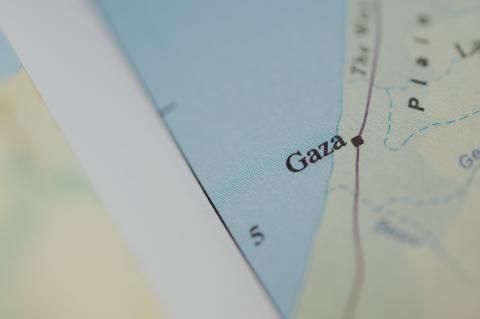Two events overnight in Syria have demonstrated just how complicated the situation continues to be. In the first instance, Iran joined Russia and the United States in lobbing missiles at Islamic State targets inside Syrian territory. The statement from the Iranian Revolutionary Guards Corps (IRGC) said the missiles were fired from Kermanshah and struck Islamic State headquarters and a logistical centre used for assembling cars for suicide attacks. This attack appears to be a continuation of retribution sought by Tehran after last week's attack on the Iranian parliament and the shrine of Ayatollah Khomeini. Major General Qassem Suleimani's Instagram posts had indicated that IS should expect further retribution after Iran claimed to have killed the mastermind of the attack shortly after the events. Of course the action - in addition to being a tactical strike against an enemy who had attacked Iran, and a nationalistic boost for the IRGC who conducted the missile strike - also carried no small element of strategic messaging to Iran's enemies. It demonstrated Tehran has the ability to conduct a missile attack over another state's airspace and to accurately engage targets 700 km away. In a period of heightened tension within the region, the IRGC was putting opponents on notice regarding its capabilities.
Elsewhere, the United States shot down its first Syrian aircraft of the war near Tabqah. The press release announcing the action said it was in accordance with the collective self-defence of coalition-partnered forces after clashes between Syrian government and the US-backed, Kurdish-led Syrian Democratic Forces (SDF). It also stated that the Russians had been contacted on the deconfliction hotline prior to the aerial engagement. The Syrian government's response was that the aircraft had been engaged in an anti-Islamic State mission. It would appear that, as Syrian forces head east, they are coming into contact with US-supported forces holding territory taken from Islamic State.
The two events, when considered alongside recent events in Tanf in the south, where US forces had engaged pro-Syrian government forces, demonstrate how Damascus and Tehran (and Moscow) are making life more complicated for Washington.
The rationale for the dispatch of enabling forces for groups such as the SDF was to accelerate the fight against IS, but little consideration was given to what the US position would be in relation to supporting the SDF in areas in which IS no longer operates when the Syrian government tries to reassert sovereignty. No rational strategic planner would countenance supporting the de facto partition of parts of Syria that rely on US military support for their survival. And while planners may have thought that they could address these problems sequentially, by first taking Raqqa and then dealing with the post-Raqqa politics of Syria, Washington's opponents are forcing the US to decide to what extent it is going to oppose Syrian regime and allied forces when they try to re-establish government control over areas cleared of Islamic State. Policy made on the run is rarely coherent or good policy, but that looks like what Washington is being forced to do in Syria.
If a week is a long time in politics, it appears to be an eternity in the Syrian conflict.

